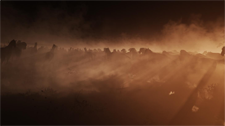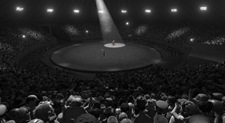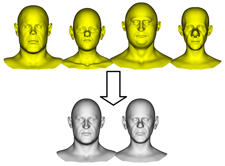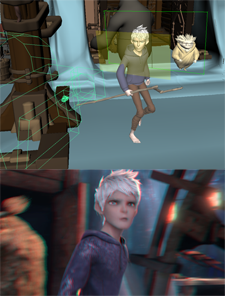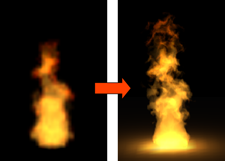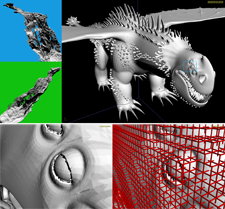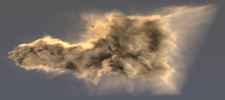Program
| 8:30-9:00 am : Registration and Coffee |
|---|
| 9:00–9:15 am : Introduction |
| 9:15-10:30 am : Keynote Speaker Joe Letteri, Senior Visual Effects Supervisor, Weta Digital |
Virtual Production: What It Means to Combine Animation, Visual Effects and Live Action Filmmaking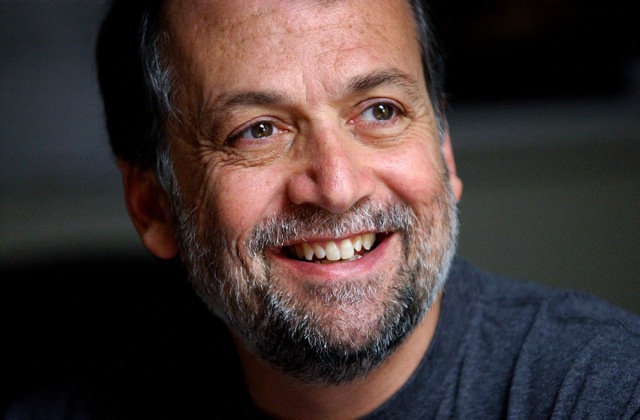
Four-time Oscar-winning Senior Visual Effects Supervisor Joe Letteri will talk about what Weta Digital has learned from pioneering Virtual Production projects Avatar and The Adventures of Tintin. The talk will delve more deeply into the R&D challenges and interesting insights that came out of reworking the digital film pipeline to accommodate a more holistic view of production. This holostic view meant bridging animation and live action to bring out the best of both worlds and rethinking rendering, lighting, compositing and just about everything else. This presentation shows why this way of working enables greater creative freedom and has attracted directors like Peter Jackson, James Cameron and Steven Spielberg. And it shows how much more there still is to solve… |
| 10:45 am -12:30 pm : Deep Space | Session Chair : Bill Polson, Pixar Animation Studios |
Camera Space Volumetric ShadowsThis work transforms irregularly sampled shadow map data to deep image buffers in camera space, which are then used to create volumetric shadows in a deep compositing workflow. This often avoids costly re-rendering, enabling short turnaround times for cinematic lighting design. Johannes Hanika, |
Improving Crowd Quality Through Interdepartmental Collaboration on Madagascar 3: Europe’s Most WantedThis paper presents how our close collaboration between Crowds and Character Technical Directors helped achieve hero-quality deformations and animated performances for crowd characters in Madagascar 3: Europe’s Most Wanted. Nathaniel Dirksen, |
A Facial Composite Editor for Blendshape CharactersThis work presents an interactive editing system that allows digital modelers to rapidly create new blendshape face models for incidental or background characters, starting from a small number of given face models. Selected facial features from the source are blended in gradient domain, and the final face is produced by integrating the resulting Poisson equation. Wan-Chun Ma, |
M.A.C.: An Automatic Stereoscopic Calculator for Animation PipelinesThis paper introduces a set of tools and techniques to automatically set art-directed stereoscopic parameters for cameras within animation pipelines. The new stereoscopic calculator and subsequent workflows allow for greater creative control, a higher degree of consistency in establishing baseline cross-sequence stereo, improved artist efficiency, and enables easy integration of stereo at the beginning of shot production. Philip McNally, |
| 12:30–1:45 pm : Lunch |
| 1:45-3:00 pm : Fluid Flow | Session Chair : Tae-Yong Kim, NVIDIA |
A Data-Driven Approach for Synthesizing High-Resolution Animation of FireThis work proposes a simple and efficient data-driven method for synthesizing high-resolution 3D animations of fire from low-resolution fluid simulations. The key concept behind our method is to use a pre-computed database of high-resolution velocity fields in order to produce small-scale details that are lost in low-resolution velocity fields. Syuhei Sato (Hokkaido University, Japan), |
Scalable Fluid Simulation in Linear Time on Shared Memory MultiprocessorsThis work describes a framework for creating animated special effects such as dust, smoke and fire using a generalized transport system coupled with a fluid dynamics engine. By presenting all inputs to the fluid solver as volumetric data, we can take advantage of fast, direct FFT-based elliptic solvers, whose performance and scalability is optimal on shared memory multicore machines and is dramatically faster than the best iterative methods. Ronald D. Henderson |
Extracting Fluid from a Video for Efficient Post-ProductionThis paper proposes a method to extract fluids from a video that is captured outside a special studio. The method allows the designer to efficiently use the extracted fluids for the post-production. Makoto Okabe (UEC/JST PRESTO, Japan), |
| 3:15-4:30 pm : Speed | Session Chair : Doug Epps |
LibEE: A Multithreaded Dependency Graph for Character AnimationThis paper presents a new dependency graph evaluation engine called LibEE for our next generation in-house animation tool. LibEE is designed from the ground up to be very heavily multithreaded, and is thus able to deliver extremely high performance to animators. The paper discusses the motivations, design choices and implementation of the graph engine itself, and production adoption considerations. Martin Watt, |
Ray Casting Sparse Level SetsThis work describes the implementation of a fast renderer for large sparse level set volume data that is able to deliver interactive frame rates. The algorithm works with spatial subdivision data structures that present a signed distance field for the level set. We have tested our method with DreamWorks VDB data structure as well as a simple hierarchical tree data structure. Meng Zhu (Clemson University, DreamWorks Animation, United States), |
Bringing Transmittance Function Maps to the Screen: Wrath of the Titans and PrometheusParticipating media are an unavoidable part of today’s visual effects. The computation of compelling lighting effects within clouds or smoke remains challenging, both in terms of memory occupancy and computational power. Also, the fine tuning and layout of production-quality scenes requires efficient techniques for fast pre-visualization of the results. The production of Wrath of the Titans and Prometheus involved numerous shots containing complex, extremely dense participating media. This paper proposes an adaptation of the Transmittance Function Maps techniques for high quality interactive pre-visualization of such media. Based on a dual ray marching approach, our technique estimates single scattering in both dense and wispy media, making it usable for any medium ranging from light smoke to heavy pyroclastic clouds. Jose Esteve (Moving Picture Company, United Kingdom), |
| 4:45-5:15 pm : DigiPro Planning Session |

